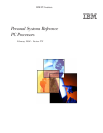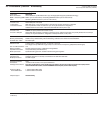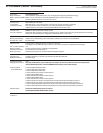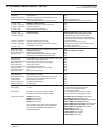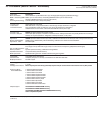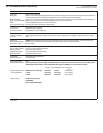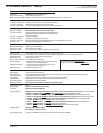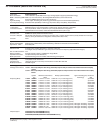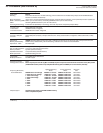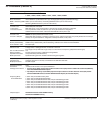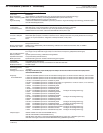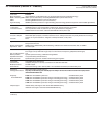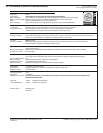
PC Processors (Pentium III - Tualatin)
Code name
Instruction architecture
MMX™ / Streaming SIMD
L1 cache - bus
L1 cache - size/controller
L1 cache - write policy
L1 cache - organization
L2 cache - size
L2 cache - data path
L2 cache - buffering
L2 cache - organization
L2 cache - controller
L2 cache - write policy
L2 cache - type
Frontside bus - speed
Memory addressability
System bus - width
System bus - parity
Execution units
Supscal dispatch/execute
Superscalar issue
Superscalar retire
Out-of-order instructions
Branch prediction
Speculative execution
Math coprocessor
Processor serial number
Serial number
Bus architecture
Internal processing
User registers
Cache line size
Power management
Multiple processors
Technology (micron)
Package type
Connector
Frequency (MHz)
Chipset support
Server blade support
All trademarks are the property of their respective owners
© IBM Corp.
(17INTEL) Compiled by Roger Dodson, IBM. January 2003
Tualatin (pronounced "TWO-ala-tin")
IA-32 / CISC/RISC/micro-ops
MMX (57 new instructions) / Streaming SIMD Extensions (70 new instructions)
64-bit / full speed
16KB data; 16KB instruction / integrated / non-blocking
Write-back or thru (data); write-thru (instruction)
4 way set associative (data); 2 way set associative (instruction)
256 or 512KB / full speed (Advanced Transfer Cache)
256-bit data path / quad-wide cache line / ECC
Intelligent buffering of read and stores (called Advanced
System Buffering with 4 writeback buffers, 6 fill buffers,
8 bus queue entries)
8-way set associative
Integrated / unified (internal die; on die)
Write-through or write-back (programmable per line), uncacheable, write-protect
Non-blocking / pipelined burst synchronous
133MHz
64GB memory addressability
64-bit system bus with ECC
ECC on system bus; parity on address bus (frontside bus)
2 integer/MMX units; 1 floating point unit; 1 load unit; 1 store unit
5 micro-ops per cycle (3 micro-ops is typical); Pipeline stages: decoupled, 14 stage superpipelined
6 micro-ops per cycle (3 micro-ops is typical)
3 micro-ops per cycle
Yes (called dynamic execution)
Dynamic (based on history) / 512 entry BTB / typically
predicts 10 to 15 nested branches
Yes (typically 20 to 30 instructions beyond counter
with an average of 5 branches)
Pipelined math coprocessor
None
Unique processor serial number
Independent backside and frontside buses operate concurrently / Dual Independent Bus Architecture (DIB)
32-bits (300 bit internal bus width)
8 GPR, 8 FP, 8 FPscalar and SIMD, 40 more GPR via register renaming
32 bytes (8 bytes x 4 chunks); burst mode bus of addr-data-data-data
System Management Mode (SMM)
Some support 2-way SMP with appropriate chipset support
0.13u
Flip-Chip Pin Grid Array-2 (FC-PGA2)
Requires Socket 370 (PGA370)
900 MHz Ultra Low Voltage (DP)
512KB L2 cache for entry-level workstations and servers (announced Jan 2003)
933 MHz Low Voltage with
512KB L2 cache for blade servers (announced September 2002)
1.0A GHz 256KB L2 cache for desktop, entry-level workstations and servers (announced August 2001)
1.0 GHz Low Voltage (DP) 512KB L2 cache for entry-level workstations and servers (announced January 2003)
1.13A GHz 256KB L2 cache for desktop, entry-level workstations and servers (announced August 2001)
1.13 GHz-S
512KB L2 cache for servers (announced June 2001)
1.20 GHz 256KB L2 cache for desktop, entry-level workstations and servers (announce August 2001)
1.26 GHz-S
512KB L2 cache for servers (announced August 2001)
1.4 GHz-S
512KB L2 cache for servers and blade servers (announced January 2002)
Intel 815x, 820x, 840 and others
ServerWorks
®
HE-SL and others
Pentium III at 933MHz and 1.4GHz supported in "Performance Server Blades"
Intel
®
Pentium
®
III for desktop and entry-level workstations and servers
L2 cache bus also called Backside Bus
Memory or system bus also called
Frontside Bus
Created by IBM PC Institute
Personal Systems Reference (PSREF)



